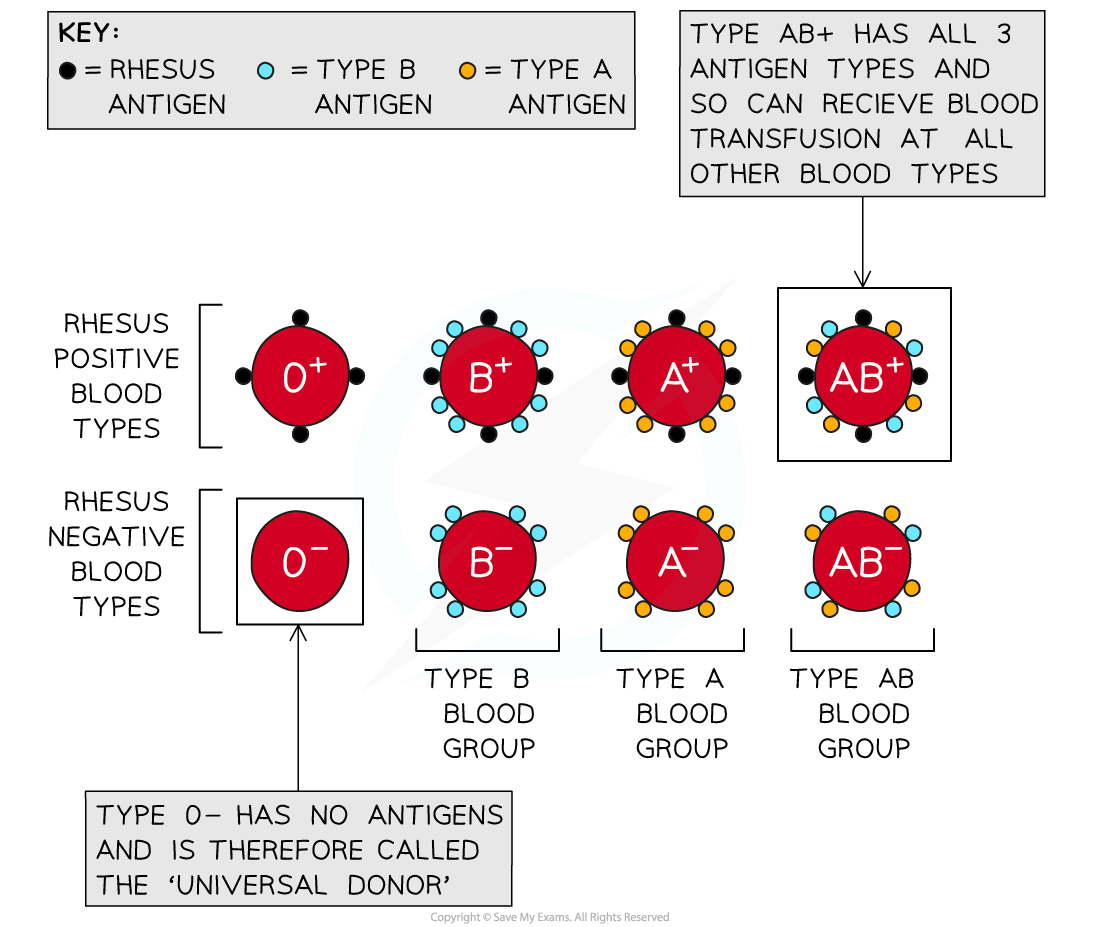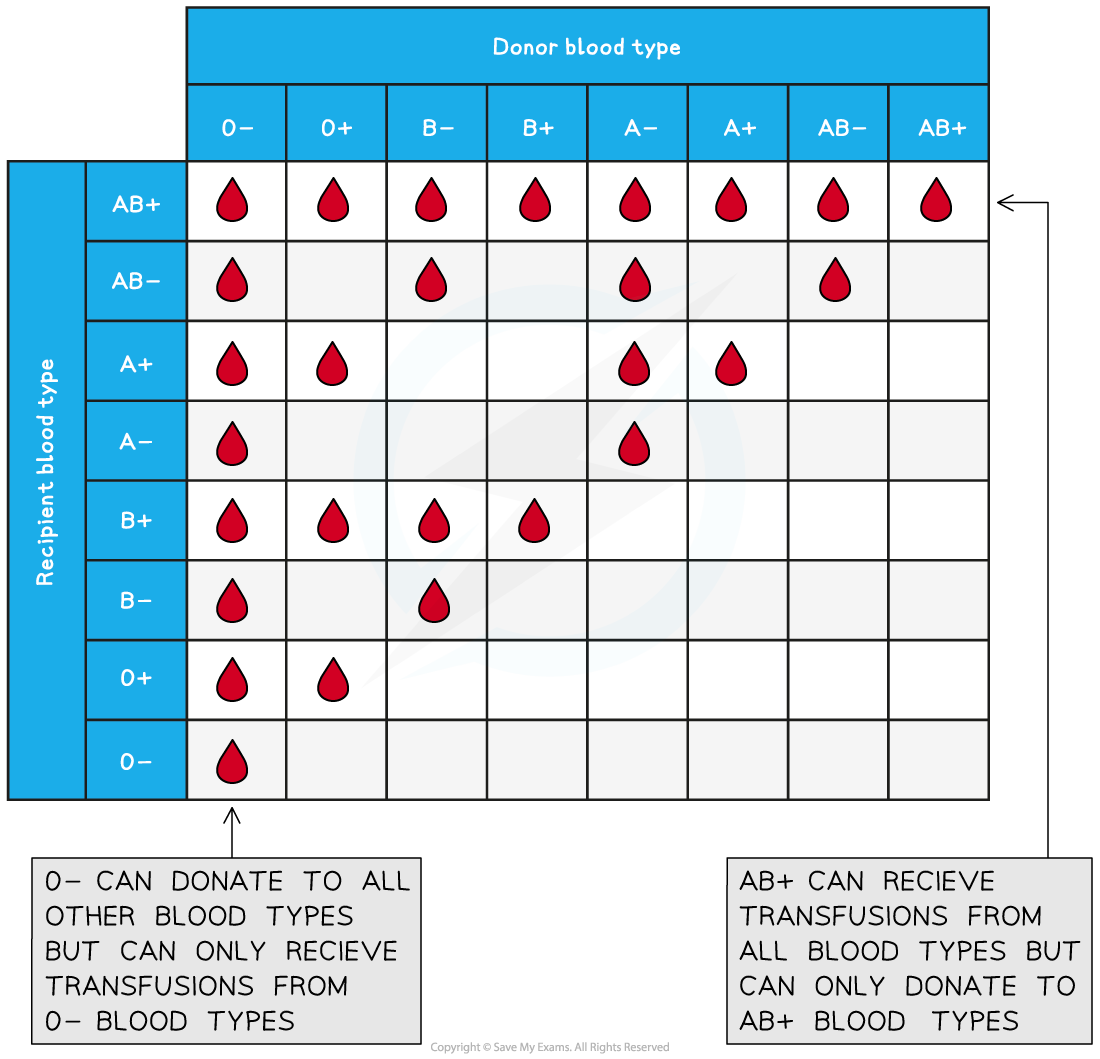Antigens
- Every organism has cells with unique molecules on the cell surface membrane which act as markers to identify it
- These unique markers are macromolecules and they allow cell-to-cell recognition
- The immune system has the ability to distinguish between 'self' and 'non-self' based on these molecules
- Microorganisms (both pathogenic and non-pathogenic), such as bacteria and viruses, trigger an immune response as the immune system recognises their markers as being non-self
- Molecules that trigger an immune response in this way are named antigens
- Antigens are found on cell surface membranes of cancer cells, bacterial cell walls, the envelopes of viruses and even pollen grains
- Some glycolipids and glycoproteins on the outer surface of cell surface membranes act as antigens
- Allergies are the result of an immune response triggered by antigens on the surface of an allergen, such as pollen
Exam Tip
The different types of pathogen include viruses, bacteria, fungi and protozoans.
Blood Transfusions & Antigens
Antigens on red blood cells
- Red blood cells have specific markers on their surface known as antigens which determine the blood group of an individual
- If a transfusion is given to an individual with mismatched blood group, the antigens on the red blood cell surface will trigger an immune response
- There are two antigen markers that must be considered:
- The ABO marker - this determines whether the individual is blood group A, B, AB or O
- The Rhesus (Rh) marker - this determines whether the individual is rhesus positive or rhesus negative
Determining ABO blood types
- Blood type A has a type A antigen consisting of an initial 'H' marker which is modified with another molecule called N-acetylgalactosamine
- Blood type B has a type B antigen consisting of an initial 'H' marker which is modified with another molecule called galactose
- Blood type AB has type A and B antigens consisting of two 'H' markers one of which is modified with N-acetylgalactosamine and the other with galactose'
- In blood type O, the 'H' marker is not modified and so there are no A or B antigens

Blood type is determined by the presence or absence of specific antigen markers on the surface of the red blood cells
- If a transfusion is given to someone of an incompatible blood type, an immune response will occur due to the presence of antibodies in the recipient's blood that bind to blood cells with non-self antigens
- An immune response may result in agglutination of the blood in the blood vessels and could be fatal
- Agglutination is when red blood cells clump together due to the binding of antigens and antibodies
- Compatible blood types means not using blood that has a different type of antigen to the patients blood

Blood type must be compatible when carrying out a transfusion to prevent coagulation of blood in blood vessels
